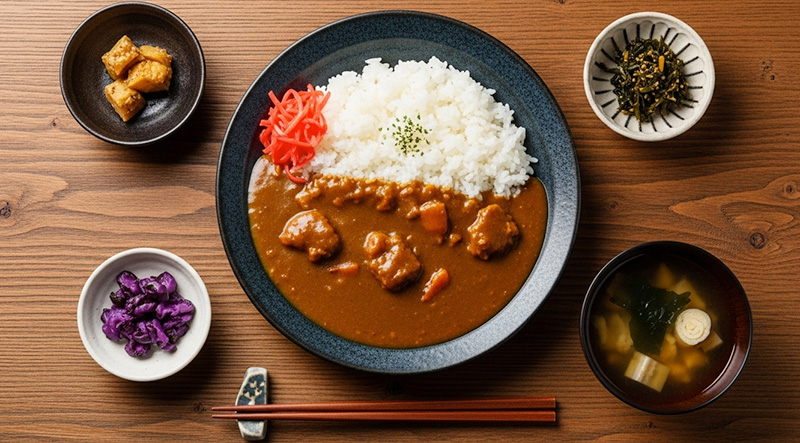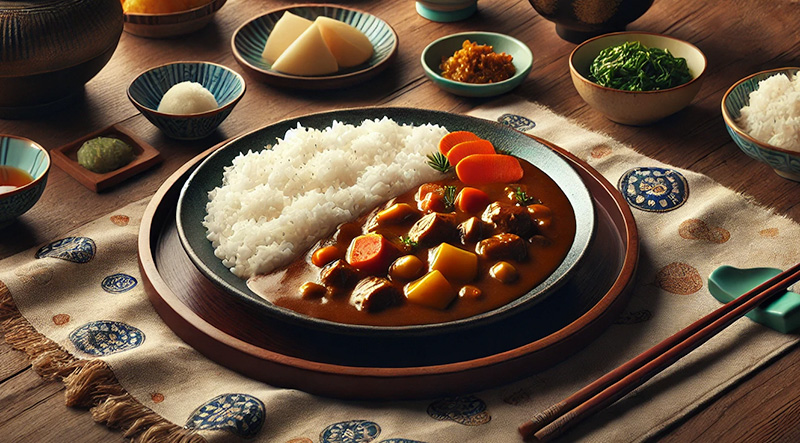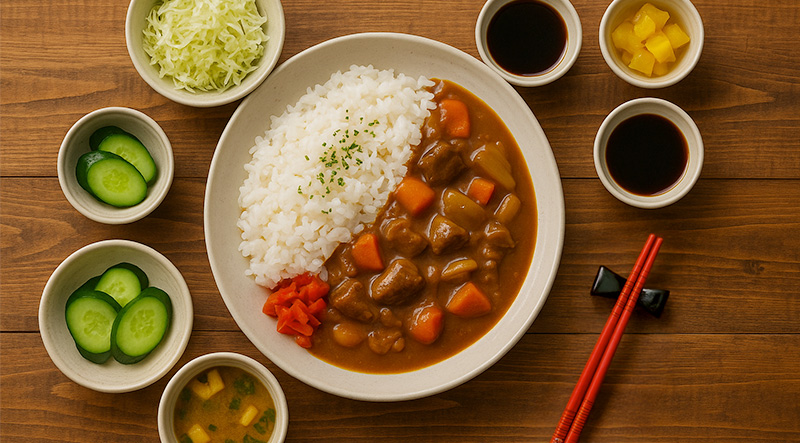Curry rice, also known as Karē Raisu, is a popular national dish in Japan that is hearty, comforting, and incredibly savory. Japanese curry, which is generously poured over fluffy white rice and packed with tender chunks of meat, potatoes, and carrots, is thick, mildly sweet, and full of umami, in contrast to its spicier international cousins. From elegant home kitchens to school cafeterias, this is the quintessential comfort food. One spoonful of this golden goodness will show you why Karē Raisu has earned its place at the center of Japanese cuisine. It is easy to make but incredibly satisfying. Read More...
The History of Japan’s National Dish: Curry Rice (Karē Raisu):
When most people think of Japanese cuisine, sushi and ramen often come to mind. But ask a Japanese schoolchild, a busy office worker, or a home cook what dish feels most like home, and the answer will likely be Curry Rice (Karē Raisu). This hearty, mildly spiced comfort food has become a staple on Japanese dinner tables and is considered by many to be the country’s unofficial national dish. Its journey from foreign import to national favorite is a fascinating tale of adaptation, cultural fusion, and culinary innovation.
From British Empire to Meiji Japan:
Although curry originally hails from India, Japanese curry did not come directly from South Asia. Instead, it was introduced to Japan by the British Navy during the Meiji era (1868–1912), when Japan opened its doors to Western influences after centuries of isolation. British sailors, who had adopted curry from their colonial experiences in India, brought with them a version of “curried stew” thickened with roux and seasoned with mild spices.
The Japanese Navy, seeking nutritious and easily prepared meals, adopted this dish for its own crews. It wasn’t long before it found its way into army mess halls, school lunches, and eventually Japanese homes. The version that emerged was less fiery than Indian curry, more savory than sweet, and distinctly Japanese in both taste and presentation.
Curry Meets Rice: A Match Made in Nippon:
In Japan, curry is almost always served over steamed white rice, hence the name Karē Raisu (カレーライス). The dish typically features a thick, brown curry sauce made with a base of onions, carrots, and potatoes, and often includes beef, chicken, or pork. Unlike Indian or Thai curries, Japanese curry is mild in heat but rich in umami, often sweetened slightly with grated apples, honey, or even chocolate.
A unique feature of Japanese curry is the use of curry roux blocks—pre-made cubes of curry flavoring and thickener—which make it incredibly easy to prepare at home. These instant blocks became widely available in the 1960s and 70s, further cementing curry rice as a go-to weeknight meal.
Everywhere, Every Day: Curry in Modern Japan:
Today, curry rice is everywhere in Japan. It’s served in homes, restaurants, cafeterias, and especially in schools, where it’s a beloved part of the standard lunch menu. Fast-food curry chains like Coco Ichibanya offer endless customizations, from spice level to toppings like fried shrimp, pork cutlets (katsu karē), or boiled eggs.
There are even regional specialties, such as:
-Kanazawa Curry – known for its dark, thick curry and shredded cabbage topping
-Navy-style Curry – still served aboard Japanese Maritime Self-Defense Force vessels every Friday
The dish is so loved that January 22nd is celebrated as Curry Day in Japan, marking the day in 1872 when curry was first introduced in Japanese schools.
More Than a Meal: A Cultural Symbol:
Karē Raisu is more than just a dish—it’s a symbol of Japan’s ability to adapt and reinvent. It reflects how Japan absorbed foreign influence and turned it into something uniquely its own. It’s economical, nutritious, endlessly customizable, and deeply nostalgic for many.
Whether enjoyed as a simple weeknight dinner, a cafeteria favorite, or a gourmet variation at a specialty curry house, Japanese curry rice continues to unite generations across the archipelago with its comforting warmth and delicious flavor.
Sear the Meat:

Sauté Aromatics and Vegetables:
Optional: Add garlic, ginger, or grated apple here for extra depth
Simmer:

Add the Curry Roux:
Serve:

Tips:
The total preparation time for Japanese Curry Rice (Karē Raisu) is approximately 45 to 60 minutes, including both prep and cooking. Chopping the vegetables and meat takes about 10–15 minutes, while sautéing and simmering the curry takes around 30–40 minutes, depending on the tenderness of the meat and size of the vegetable chunks. If you’re using pre-made curry roux, it speeds up the process significantly. Cooking rice separately in a rice cooker or pot typically takes 20–30 minutes, which can be done simultaneously. Overall, it’s a straightforward dish that fits well into a weeknight dinner schedule.
A single serving of Japanese Curry Rice (Karē Raisu), based on the recipe provided, contains approximately 500–650 calories, depending on portion size and optional ingredients. The main components—steamed white rice and the curry sauce with meat and vegetables—contribute most of the calories. A typical serving includes about 1 to 1.5 cups of rice (200–250 calories), 3–4 oz of meat (150–200 calories), curry roux (80–100 calories), and vegetables (50–70 calories). Adding optional ingredients like butter, grated apple, or a pork cutlet (katsu) can increase the total significantly. It’s a hearty, well-balanced meal that delivers both comfort and nourishment.







